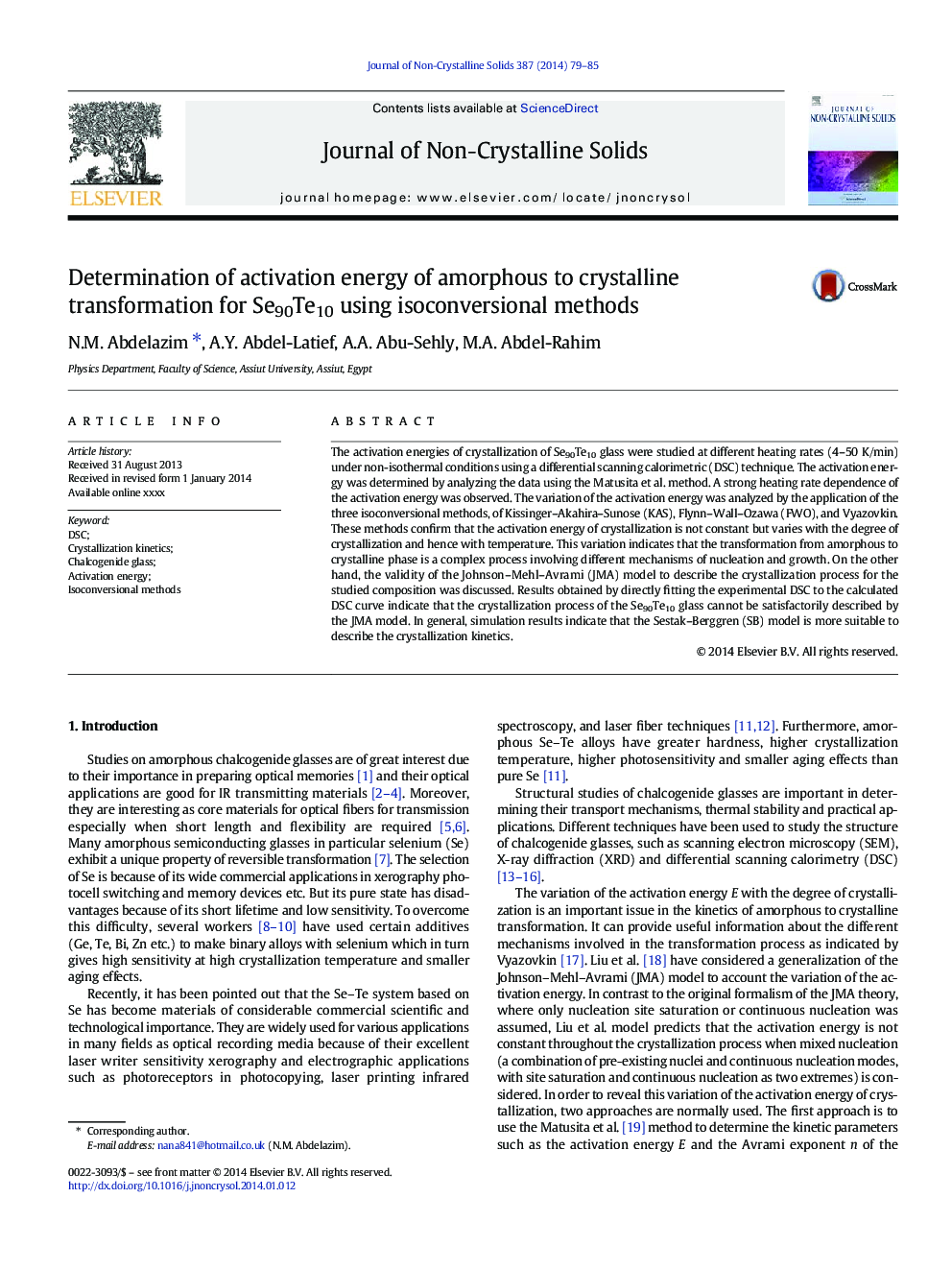| Article ID | Journal | Published Year | Pages | File Type |
|---|---|---|---|---|
| 7902381 | Journal of Non-Crystalline Solids | 2014 | 7 Pages |
Abstract
The activation energies of crystallization of Se90Te10 glass were studied at different heating rates (4-50Â K/min) under non-isothermal conditions using a differential scanning calorimetric (DSC) technique. The activation energy was determined by analyzing the data using the Matusita et al. method. A strong heating rate dependence of the activation energy was observed. The variation of the activation energy was analyzed by the application of the three isoconversional methods, of Kissinger-Akahira-Sunose (KAS), Flynn-Wall-Ozawa (FWO), and Vyazovkin. These methods confirm that the activation energy of crystallization is not constant but varies with the degree of crystallization and hence with temperature. This variation indicates that the transformation from amorphous to crystalline phase is a complex process involving different mechanisms of nucleation and growth. On the other hand, the validity of the Johnson-Mehl-Avrami (JMA) model to describe the crystallization process for the studied composition was discussed. Results obtained by directly fitting the experimental DSC to the calculated DSC curve indicate that the crystallization process of the Se90Te10 glass cannot be satisfactorily described by the JMA model. In general, simulation results indicate that the Sestak-Berggren (SB) model is more suitable to describe the crystallization kinetics.
Related Topics
Physical Sciences and Engineering
Materials Science
Ceramics and Composites
Authors
N.M. Abdelazim, A.Y. Abdel-Latief, A.A. Abu-Sehly, M.A. Abdel-Rahim,
